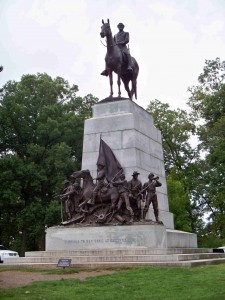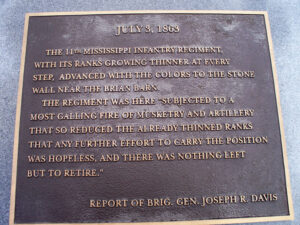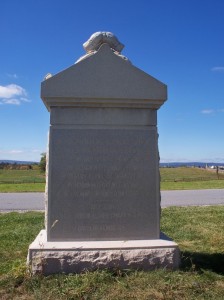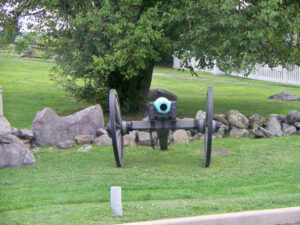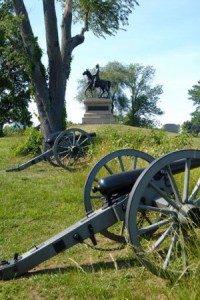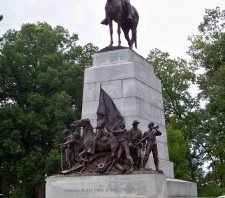
Gettysburg Hotspots
November 14, 2014Even as the temperature starts to drop, the famous fields, provocative places, and memorable monuments still remain hotspots for visitors coming to witness historic Gettysburg. We’ve taken the time to put together a list of some of the popular locales that people look for when they visit so that you don’t miss any of these interesting hotspots on your next trip to see us. Have you been able to see them all?
Famous Places
- Where President Lincoln delivered his Gettysburg Address – Located just outside the Soldiers’ National Cemetery is a marker that lets you know Lincoln delivered his historic Gettysburg Address nearby. The exact location is disputed, but the National Park Service has a brochure declaring it to be within the private Evergreen Cemetery.
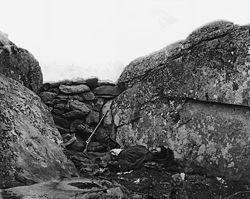
- Devil’s Den – One of the most significant and haunted battlegrounds on the Gettysburg battlefield, The Devil’s Den is roughly 500 yards west of Little Round Top. Surrounded by large boulders, a Confederate sharpshooter used this hideout to take out hundreds of Union soldiers before they discovered him.
- Little Round Top – Roughly two miles south of Gettysburg in Cumberland Township there are two rocky hills, one larger and one smaller. You can probably guess the smaller one is known as “Little Round Top.” While small in size, it still remained one of the most important positions in the Union line, and a key point for the Union’s defense during the second day of the Battle of Gettysburg.
- Pickett’s Charge – Located on Cemetery Ridge, this famous charge lead by General George Pickett was one of the defining moments of the Battle of Gettysburg. This ill-fated Confederate assault across the ridge would lead to over 6,000 Confederate deaths and would be Lee’s last invasion of the north, and came to signify the end of the Battle of Gettysburg.
Famous Monuments
- Peace Light Memorial –Also referred to as the Eternal Light Peace Memorial, this Gettysburg Battlefield monument was dedicated by President Roosevelt in July 1938. Featuring an eternal flame that is visible from 20 miles away, this granite monument commemorates the 1913 Gettysburg reunion of veterans that celebrated the 50th anniversary of the Battle of Gettysburg. It is located on Oak Hill.
- Virginia Monument – The first and largest Confederate monument built at Gettysburg, this 14-foot bronze statue of General Robert E. Lee shows him on his horse “Traveller,” above seven Confederate soldiers. The Virginia Monument is located southwest of Gettysburg on West Confederate Avenue.
- North Carolina Monument – Once again located on West Confederate Avenue, this monument commemorates the 32 Carolina regiments at that Battle of Gettysburg. This collection of troops only trailed Virginia in terms of men it supplied to the battle, but featured the largest number of casualties of all the Confederate states.
- Irish Brigade – South of Gettysburg on Sickles Avenue, and just inside the Rose Woods stands a bronze Celtic cross that commemorates the predominantly Irish American infantry brigade that served the Union army.
If you haven’t seen these amazing historic Civil War locations and monuments, we encourage you to pay them a visit on your next trip to Gettysburg. Since there’s so much to see and do in Gettysburg, this list should by no means be considered expansive, but it does cover many of our most asked about attractions.
If you’d like to learn more about these or other great spots to visit on your next Gettysburg trip, feel free to comment below or contact us and we’d be happy to help!
11th Mississippi Infantry Memorial
November 12, 2014Located on Seminary Ridge across from the North Carolina Memorial a rare Confederate Regimental marker can be found. The 11th Mississippi Infantry memorial is placed near where the regiment formed for battle on the afternoon of July 3, 1863. On the monument is Sergeant William O’Brien of Company C raising the flag & urging his comrades forward. Sergeant O’Brien was the first of 8 color bearers who were either killed or wounded during Pickett’s ill-fated charge. For the true Gettysburg “buff” there is a second marker to this unit located near the stone wall at the Bryan Barn noting the farthest advance of the remnants of this regiment on July 3rd. The 11th Mississippi entered the battle with 592 men – of these, 102 were killed, 168 wounded & 42 listed as missing or captured; a staggering 53%.
Memorial to 8th Illinois Cavalry
October 7, 2014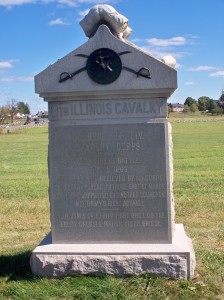
Located on Reynolds Avenue & dedicated on Sept. 3, 1891 is the memorial to the 8th Illinois Cavalry. This is one of three monuments the State of Illinois erected in 1891. This particular monument has quite a few stories to tell. It stands, number one, on the site once occupied by the 8th New York Cavalry. The New York marker was moved down the road (southerly) to accommodate the present occupant because Illinois was in this location first. Should you care to look at the flank markers (which have not been changed) you will notice they still reflect the information for the New York troopers. Perhaps the most intriguing part of this monument, however, is the single name found etched on the rear of the marker: David Diffenbaugh. No explanation will be found on the marker as to why this name is here. Private David Diffenbaugh was the regiments sole fatality at the Battle of Gettysburg & his sacrifice was remembered by his comrades. He is interred in the National Cemetery – Row A, Grave 4 of the Illinois Section.
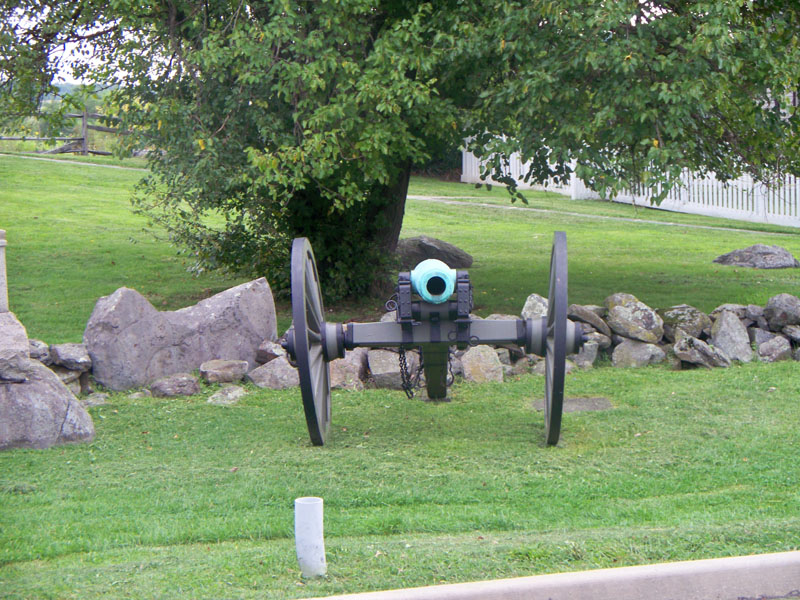
CORA
September 15, 2014Throughout recorded military history there have been many instances of soldiers naming their weapons. This happens quite often in the artillery branch of the service & we have such an example here at Gettysburg.
To be found at the farm once owned by the Trostle family is a 12 pounder Napoleon cannon named “CORA” by her crew. The name, painted on the breech, appears to be more a form of endearment than a title designed to strike fear into the hearts of the enemy.
While the gun barrel did not take part in the Battle of Gettysburg, it is Civil War vintage & saw action elsewhere.
Until a letter or a diary surfaces that mentions a gun named “Cora” this is destined to remain a mystery of history.
Battle of Gettysburg FAQ’s
August 20, 2014When you are dealing with such rich historical series of events like the Battle of Gettysburg, there may be some questions that pop up as you learn more about this fascinating junction in our nation’s history. Our tour guides go through a rigorous testing process that allows them to answer just about anything you might want to know. In speaking with them and talking with people who are planning on a visit, we’ve put together a list of some of the most common questions we get each day shed some light on this famous battleground.
- Where is the Gettysburg Battlefield?
- The Gettysburg Battlefield is located in Adams County, Pennsylvania, and covers areas around and throughout the borough of Gettysburg.
- How large is the National Park at Gettysburg?
- The National Park at Gettysburg covers roughly 6000 acres!
- How many monuments are on the Gettysburg Battlefield?
- There are a wide range of monuments on the Gettysburg Battlefield and we encourage you to see them all! Offering around 1328 monuments to see, you may need more than a one day trip to see them all.
- Who put the monuments on the Gettysburg Battlefield?
- Was there fighting in the town of Gettysburg?
- There was some fighting in the streets of Gettysburg. Fortunately there was only one civilian casualty during the three days of battle. Unfortunately it was a young girl who was killed when a stray bullet came through two doors and struck her in the back killing her instantly. You can learn more about Jennie Wade and the Jennie Wade house on its history page here.
- Are there any homes or buildings that were here during the time of the battle?
- There are numerous homes and buildings that were here during the battle, and some still bear the scars from the fierce fighting that occurred. You can identify these homes or buildings by locating the small plaque between the doors and windows of the building that all say, “Civil War Building 1863.”
We hope this list covers one or more of the questions you may have had about the Battle of Gettysburg, but also understand you may have many more. If you’d like to see them covered in a future blog or want to reach out and find out for yourself, feel free to use our contact page and we’ll be happy to answer them for you!
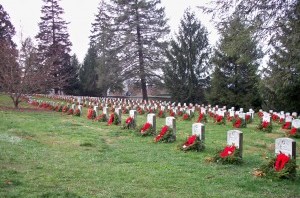
Where Are The Gettysburg Battlefield Soldiers Buried?
July 16, 2014Are you curious, as many of our guests have been here at Gettysburg Battlefield Bus Tours, where the soldiers who fought in the Battle of Gettysburg are buried? Fortunately you won’t have to search any further, as today’s blog will tell you exactly where you can find both the Union and Confederate soldiers burial sites, and then all you’ll have to do is book a visit here to Gettysburg to see them!
Union Soldiers –
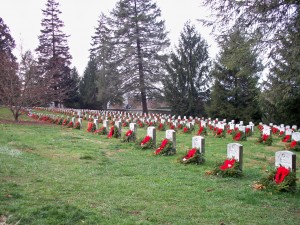
Most of the Union dead are buried in the Soldiers’ National Cemetery, which is located between Baltimore Street and Taneytown Road here in Gettysburg. It is right beside the local town cemetery and features the Soldiers National Monument in the center of it all. The Veteran’s Administration actually offers a database of burials that you can search by gravesite location, as well as name, date of birth, and date of death.
Confederate Soldiers –
The southern soldiers were actually removed from the battlefield roughly nine years after the battle and taken to southern cemeteries with specific locales set aside for the Gettysburg campaign casualties.
If you have a specific question you’d like answered, be sure to let us know in the comments, or leave us a message on our social media channels that you can find at the bottom of this page. We’re more than happy to help, and look forward to your visit!
Union Brig. General Alexander Schimmelfennig
July 15, 2014
History is to be found everywhere in the town of Gettysburg. In addition to the monuments, plaques & cannons, useful tools called “Wayside Markers” are also available for the serious or casual student of the battle. A great deal of valuable insight may be obtained by paying careful attention to these markers as you visit the area.
On such marker can be found at the former home of Henry & Catherine Garlach – the address being 319 Baltimore Street.
This marker relates the story of Union Brig. General Alexander Schimmelfennig who, on July 1, 1863, found himself wounded & riding through the town desperately trying to avoid capture (or worse) by the advancing Confederates.
With his horse shot from underneath him, General Schimmelfennig realized that he would not make it back to the Union lines. He quickly sought shelter under a drainage ditch cover behind the Garlach home.
Under cover of darkness the General moved out from the cover & squeezed himself between a wood pile & a hog swill barrel. Mrs. Garlach discovered him while feeding the hogs & managed to discreetly supply him with food & water during his concealment.
General Schimmelfennig was not able to return to his men until the last of the Confederate sharpshooters left the town on July 4th.
The George Spangler Farm Civil War Hospital Site
July 9, 2014Friday, June 06, 2014 to Sunday, August 10, 2014
Time: 10:00am-2:00pm
Educational Event
The George Spangler Farm Civil War Hospital Site is one of the most intact Civil War field hospitals used during the battle of Gettysburg. During and after the battle, the Spangler family’s homestead was occupied by the Union army’s Eleventh Corps who used the buildings and fields as a hospital for some 1,900 wounded Union and Confederate soldiers.
Free admission and shuttle tickets are available at the Ticketing Counter inside Gettysburg National Military Park Museum & Visitor Center. The site is accessible by shuttle only. Tickets may only be obtained the day of your visit to the Spangler Farm.
Program Schedule
An Army Field Hospital: The George Spangler Farm
11am-Noon
Join a National Park Service Ranger at the George Spangler Farm and discover the field hospital where over 1,900 soldiers wounded in the battle of Gettysburg were cared for.
Arts and Trades of the Past
10:15-10:45am
12:15-12:45pm
Join living historians demonstrating trades of the period and get a glimpse at civilian life at the farm.
History Comes to Life: War Reaches the Homefront
1-1:30pm
View a dramatic ensemble cast of soldiers and civilians who witnessed the battle of Gettysburg and the George Spangler Farm’s transformation from home to hospital.
Interactive History Encampments
10am-2pm
Mingle with living historians in authentic camps portraying the civilian experience, civilian aide societies, Civil War field medicine and Union artillery.
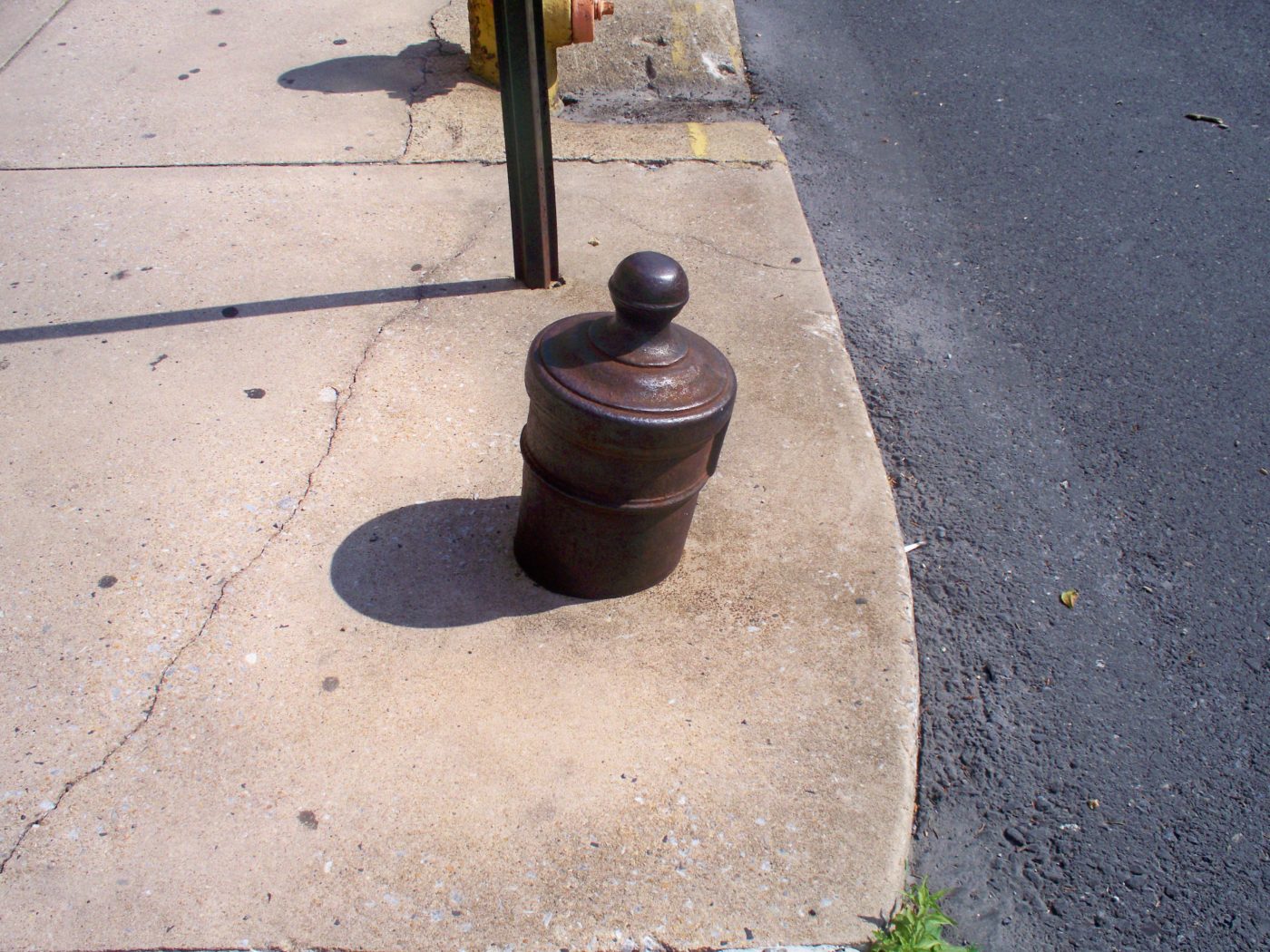
Penelope
June 23, 2014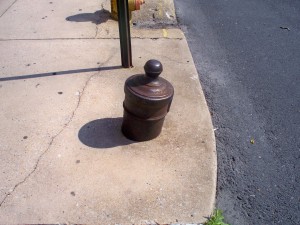
Located on Baltimore Street in front of what was once the office of “The Gettysburg Compiler” the Democratic town newspaper, is a half buried cannon affectionately known as “Penelope”.
A relic from the War of 1812 & prior to 1855 this gun stood upright & ready for action.
Henry Stahle the outspoken publisher of the “Compiler” would have this cannon fired in celebration after every Democratic election victory.
In 1855, however, the gun was overloaded with powder & the barrel exploded upon firing. Rather than toss poor old “Penelope” on the trash pile, Mr. Stahle elected to have her buried in front of his office for all the world to see.
She was there during the Battle of Gettysburg & soldiers on both sides had to run around this strange sight. It makes you wonder what possibly could have gone through their minds as they tried to figure out the story behind this unique piece of town history.
Who is Jennie Wade?
May 28, 2014Born Mary Virginia “Jennie” Wade, Jennie Wade worked as a seamstress with her mother during the Civil War era. Because of the pending war, Jennie, along with her brother and neighbor boy left their home on Breckenridge Street to go to her sisters as she felt it would be safer, and her mother was already there helping with her sister Georgia’s newborn.
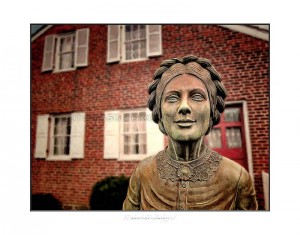 Unfortunately this turned out to be a horrible mistake, as the Confederate forces moved into Gettysburg on July 1, 1863. Jennie’s family helped the Union soldiers by providing bread and water, and on a fateful July 3rd morning Jennie had just begun kneading a new batch of dough when she was hit by a Confederate soldier’s bullet which had pierced the house. The round traveled through Jennie’s shoulder and heart, and came to rest in her corset.
Unfortunately this turned out to be a horrible mistake, as the Confederate forces moved into Gettysburg on July 1, 1863. Jennie’s family helped the Union soldiers by providing bread and water, and on a fateful July 3rd morning Jennie had just begun kneading a new batch of dough when she was hit by a Confederate soldier’s bullet which had pierced the house. The round traveled through Jennie’s shoulder and heart, and came to rest in her corset.
At just 20 years old, Jennie Wade became the only civilian casualty killed during the Battle of Gettysburg.
Learn more about Jennie Wade and the Jennie Wade House via the button at the top of the page, or in our “Quick Links” section to the left.
